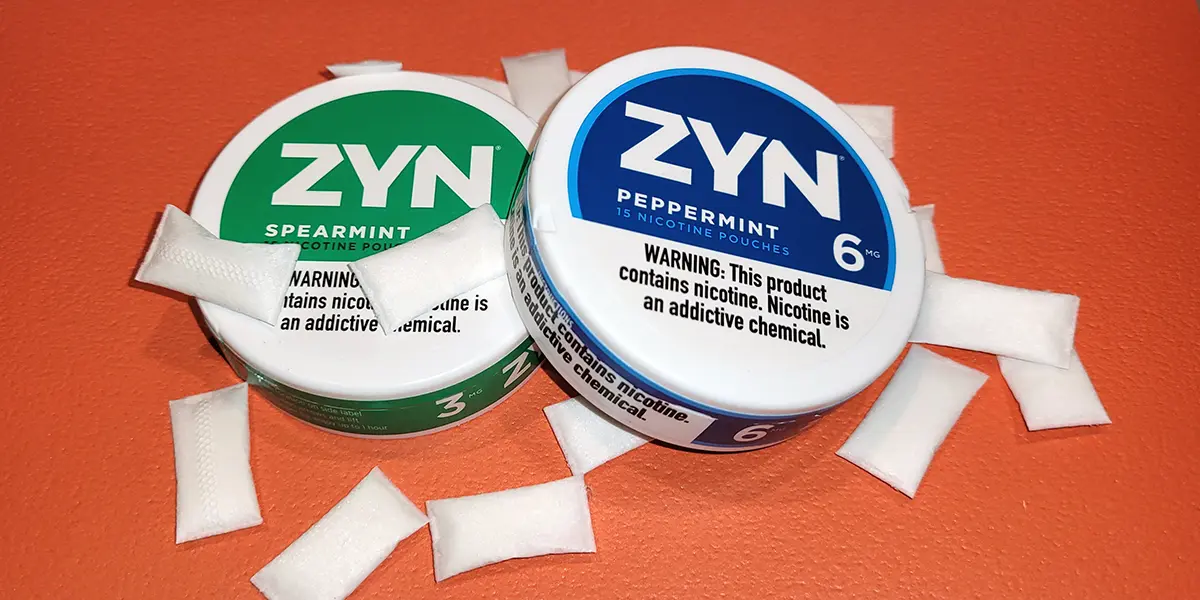There’s something quietly haunting about wondering how long can someone live without food. Maybe it’s curiosity, or maybe it’s that uneasy fascination we all have with the limits of the human body — how far it can stretch before it simply says, enough.
If you’ve ever skipped a few meals — maybe because of a stomach bug, travel delay, or just life getting in the way — you’ve probably felt that raw hum in your body. The dull ache of hunger, the brain fog that creeps in, the way even a granola bar starts to look like gold. But what happens if that continues for days… or weeks?
The truth is, it depends. People aren’t machines. Survival time without food shifts with so many variables — hydration, body fat, muscle mass, health, even your receptive mindset. Someone resting quietly with access to sips of water might last far longer than someone exposed to heat or illness.
Science has tried to pin it down. And while numbers help — they always do — they don’t tell the whole story. There are documented cases that almost sound impossible: Mahatma Gandhi’s famous hunger strike lasted 21 days. Then there’s Angus Barbieri, the man who fasted under medical supervision for over a year, though with careful hydration and vitamins.
Still, “living without food” isn’t just about time ticking by. It’s about what happens inside — how the human body starts shifting gears, conserving energy, breaking down stores of fat, then muscle, then eventually, if pushed too far, vital organs.
And it’s not just a question for survivalists or record keepers. In hospice care or end-of-life situations, families quietly face this same question every day. How long can someone live without food — when artificial nutrition and hydration are no longer part of care? It’s both scientific and deeply human.
Maybe the more important question isn’t just how long, but what it means when the body starts letting go.
Understanding Human Energy Needs

The body, for all its complexity, runs on something simple — energy. Every heartbeat, every slow blink, every thought drifting through your head right now takes calories. That invisible burn is your basal metabolic rate (BMR) — the energy your body needs to stay alive, even if you never move an inch.
When food stops coming in, your body doesn’t panic at first. It’s built for survival. It dips into glycogen reserves — small stores of glucose in the liver and muscles. Think of them like your emergency battery pack. You’ll burn through that within 24 hours or so.
Then something remarkable happens. Your metabolic processes shift gears. The body begins burning fat stores, breaking them down into ketone bodies — an alternate fuel for the brain and muscles. This is the same process that intermittent fasting relies on, though in starvation, the line between benefit and danger fades fast.
Without new nutrients, muscle mass slowly breaks down next, feeding your brain at the cost of your strength. It’s not cruel — it’s just biology. The human body will do almost anything to keep the heart and brain alive.
And yet, this survival adaptation can’t last forever. As body fat and protein reserves decline, your organ systems start losing function. That’s when weakness, electrolyte imbalances, and eventually organ failure begin to appear.
Your energy demand becomes smaller, your movements slower, and your temperature lower. It’s not drama — it’s physics meeting biology in slow motion.
Here’s a simplified table showing how the body uses its internal fuel:
| Energy Source | Duration of Use | What Happens |
| Glycogen stores | 0–24 hours | Quick energy depletion, blood sugar drops |
| Fat reserves | 1–7 days | Ketone production increases, mild weakness |
| Muscle proteins | 1–3 weeks | Muscle wasting, energy conservation |
| Vital organs | 30–60 days | Systemic failure, high risk of death |
How the Body Prioritizes Survival
When food is scarce, the body acts like a careful accountant — trimming expenses where it can. Nonessential processes slow down: hair growth, reproductive functions, even body temperature regulation. The brain switches from glucose to ketones, trying to keep neurons firing without draining what’s left.
This metabolic shift — adaptive thermogenesis — can make survival time surprisingly long under the right conditions. In some cases, individuals have survived 60+ days on sips of water alone. But that kind of endurance comes at an enormous cost to quality of life and long-term health.
Even mental health suffers. As blood glucose dips, clarity fades, mood wavers, and small decisions feel impossible. That’s why in end-of-life or palliative care, doctors often focus less on feeding and more on comfort measures — ice chips to moisten the mouth, pain management, or emotional support for family members rather than trying to force nutrition.
It’s an act of compassion disguised as restraint.
Pro Tip:
If you ever find yourself exploring fasting (safely, not starvation), remember that hydration is everything. Even short-term fasting without proper fluid intake can trigger electrolyte imbalances, dizziness, and dehydration symptoms like headaches or confusion.
I. The Role of Hydration: Food vs Water Deprivation
It’s strange — when people wonder how long can someone live without food, they often forget that water, not food, is the real timekeeper. You can technically last weeks without eating, but only days without fluids. The human body is nearly 60% water, and every body system — from your kidney function to your immune system — depends on it.
Dehydration hits harder and faster than hunger. Within a few days, your fluid intake — or lack of it — begins to affect electrolyte balance, blood pressure, and organ function. Without IV fluids or even sips of water, the metabolic processes that keep you alive start collapsing.
How Hydration Impacts Survival Time
Let’s simplify this with an example: imagine two people stopped eating at the same time. One continues to drink water — maybe even ice chips or herbal tea. The other doesn’t.
The first might survive 45–70 days, depending on body weight, body mass index (BMI), and fat stores. The second? Likely less than 10.
That’s because water helps the body regulate temperature, flush toxins, and support cellular energy. Even the quality of life — how alert you feel, how your skin or mouth responds — depends on staying hydrated. In palliative care, nurses often keep the mouth moist with ice chips or gentle swabs because comfort, not consumption, becomes the focus.
Here’s a quick comparison:
| Condition | With Water | Without Water |
| Survival Range | 45–70 days | 7–10 days |
| Common Symptoms | Fatigue, muscle loss, dizziness | Rapid dehydration, confusion, kidney failure |
| Care Focus | Maintain hydration, rest | Comfort measures, mouth moistening |
| Medical Example | Hunger strikes, supervised fasts | Severe dehydration in natural disasters |
Pro Tip: If you’re ever fasting — even for wellness reasons — electrolytes matter more than most people think. Low sodium or potassium levels can cause muscle cramps, irregular heartbeat, and fatigue. Coconut water or electrolyte-infused drinks can make a real difference in safe fasting.
How Electrolytes Support Survival
Inside every cell, electrolytes — sodium, potassium, magnesium — act like tiny conductors, keeping your nerve impulses firing and muscles contracting. When starvation drags on, electrolyte imbalances become one of the first red flags doctors watch for.
In hospitals or hospice settings, intravenous fluids (IV fluids) and artificial nutrition and hydration are sometimes used temporarily to maintain organ function. But in end-of-life care, there’s often a shift — from trying to prolong life to ensuring comfort measures instead.
As Agape Hospice & Palliative Care explains, hydration may ease symptoms but doesn’t necessarily change life expectancy when the body systems are shutting down.
So, hydration is less about “adding time” and more about “adding ease.”
II. The Science of Starvation: 4 Stages of Energy Depletion
When we ask how long someone can live without food, what we’re really asking is how the human body reorders its priorities when resources disappear. It’s almost poetic — or tragic — how it dismantles itself in careful stages, as though reluctant to let go.
Scientists describe four primary stages of starvation, each one slower, quieter, and more devastating than the last.
Stage 1: Glycogen Depletion (0–24 hours)
Your body starts here — using up glycogen stores in your liver and muscles to keep blood sugar stable. You’ll feel tired, maybe irritable. Hunger pangs come and go, but nothing too extreme yet. It’s still early.
Stage 2: Fat Burning & Ketosis (1–7 days)
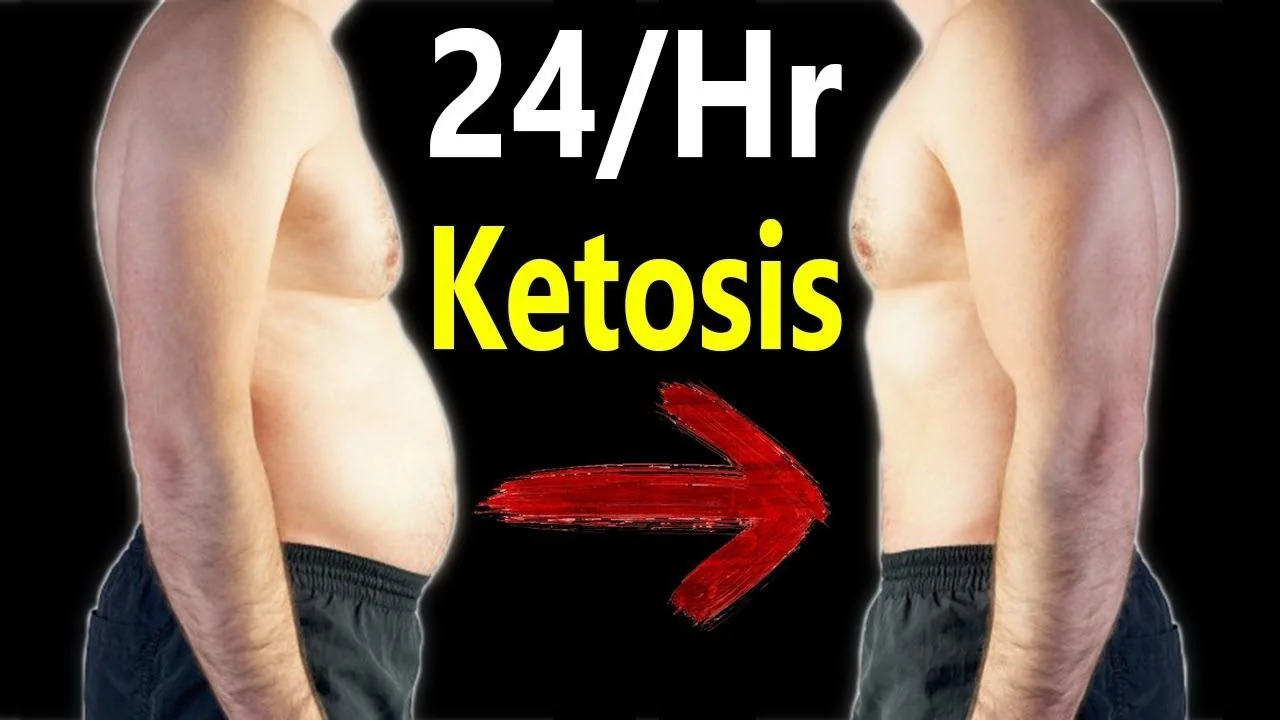
When glycogen runs out, fat breakdown begins. Ketone bodies rise, supplying the brain with an alternate fuel source. This stage mirrors the metabolic state some people chase intentionally through ketogenic diets or fasting. But in starvation, it’s not a healthy choice — it’s survival.
Your breath might smell faintly sweet or metallic (that’s acetone). You may feel oddly alert. It’s deceptive — a brief illusion of balance before deeper metabolic processes begin to strain.
Stage 3: Protein Breakdown & Muscle Loss (1–3 weeks)
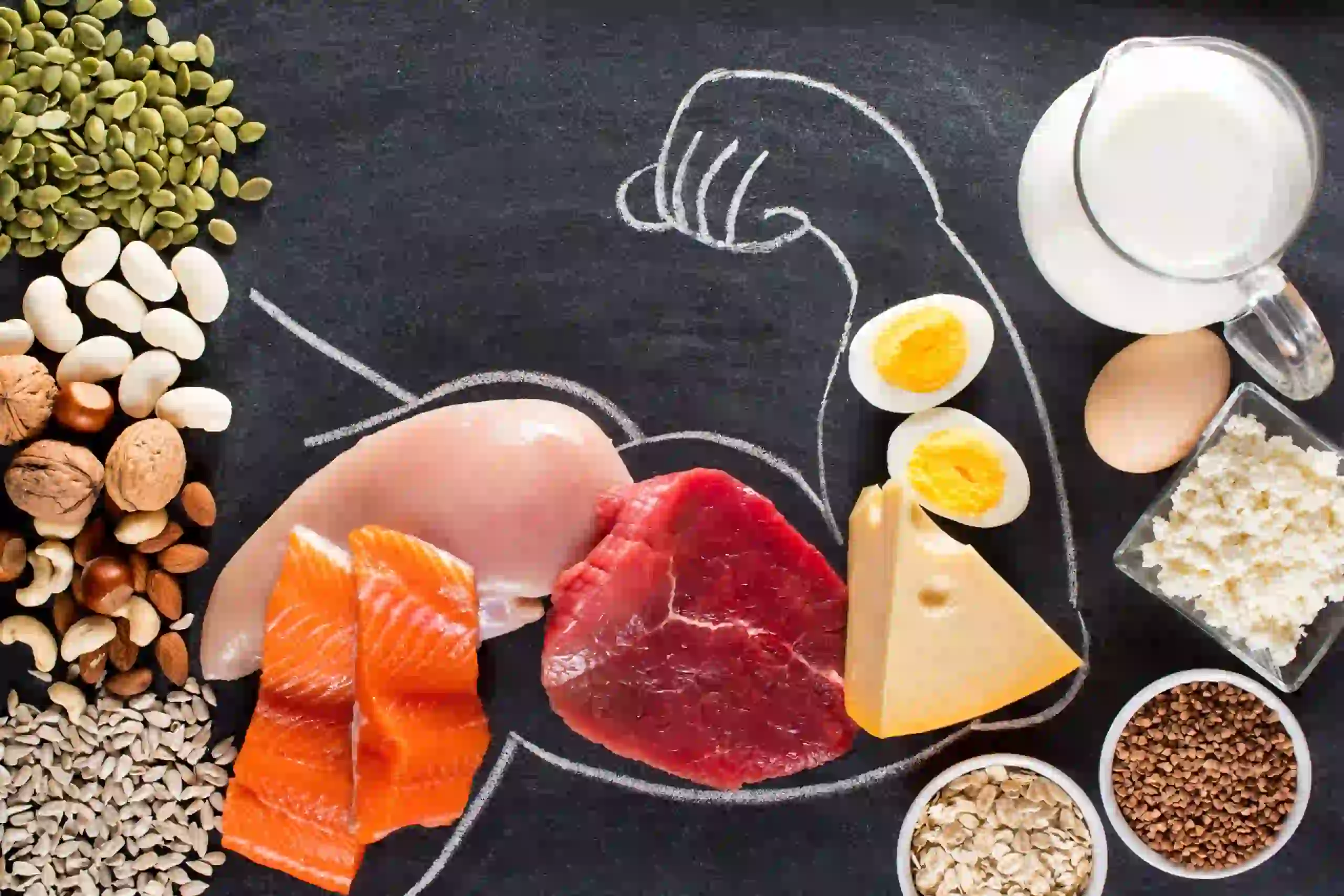
As fat stores shrink, your body begins to cannibalize muscle tissue to access amino acids for energy. Muscle wasting, weakness, and slower reflexes emerge. Even the heart, technically a muscle, isn’t safe. Body weight drops sharply, and you may experience dizziness, nausea, or low blood pressure.
In severe cases — like hunger strikes or famine survivors — neurological symptoms such as confusion and neurocognitive decline appear. Historical data from the Minnesota Starvation Experiment in 1945 revealed how even young, healthy men experienced depression, irritability, and mental health disturbances after weeks of controlled starvation.
Stage 4: Organ Failure & Terminal Starvation (Beyond 30–60 days)
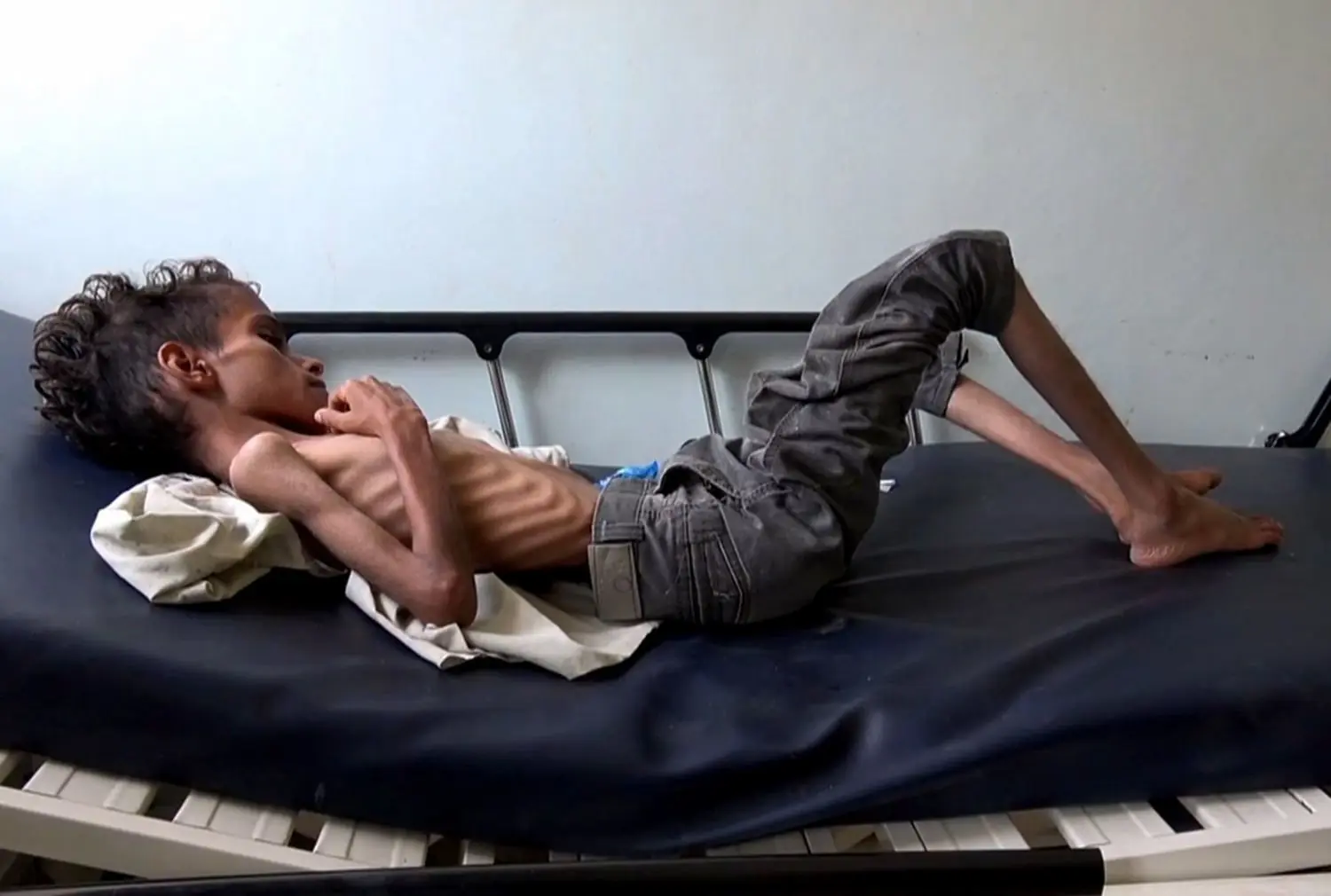
This is where survival turns to suffering. Kidney function falters. The liver struggles to detoxify. Electrolyte depletion leads to irregular heartbeat or cardiac arrest. Eventually, the immune system collapses, leaving the body vulnerable to infections like pneumonia-associated death.
At this stage, medical supervision can’t reverse damage easily. Doctors may offer IV fluids, symptoms management, or palliative care interventions for comfort. The end-of-life process becomes more about peace than prolongation.
The 4 Stages of Starvation
| Stage | Time Frame | Primary Fuel Source | Notable Symptoms |
| 1. Glycogen depletion | 0–24 hours | Stored glucose | Fatigue, hunger, mild weakness |
| 2. Fat burning & ketosis | 1–7 days | Fat stores → ketones | Energy spikes, dehydration, irritability |
| 3. Protein breakdown | 1–3 weeks | Muscle proteins | Muscle loss, brain fog, weakness |
| 4. Organ failure | 30–60 days | Tissue protein, failing systems | Organ failure, immune collapse |
Pro Tip: Never attempt prolonged fasting without medical treatment team oversight. Conditions like refeeding syndrome — where eating again after long starvation causes dangerous shifts in electrolytes — can be fatal. Rebuilding nutrition requires medical supervision, IV fluids, and gradual reintroduction of nutritional needs.
III. How Long Can Someone Actually Survive Without Food?
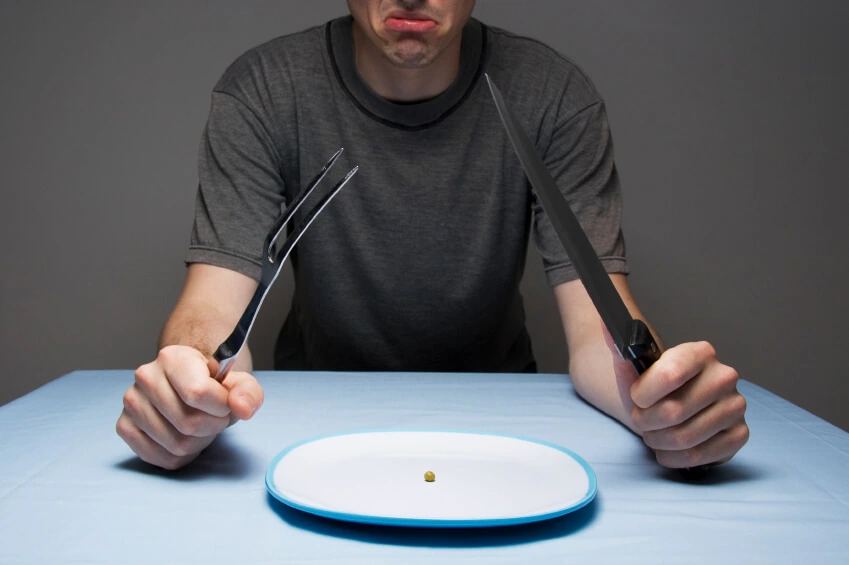
Here’s where science meets reality. The truth is… there’s no single number. When people ask how long can someone live without food, what they really want is certainty — a clean, definite answer. But survival doesn’t work that way. It bends around variables like body fat percentage, hydration levels, environmental temperature, and even mental strength.
Still, research and historical records give us a range. Most healthy adults can live between 45 and 70 days without eating, assuming they continue to drink water. But take away fluids, and life expectancy drops dramatically — sometimes to just a week.
Real-Life Cases of Prolonged Survival
Here are a few medically recorded examples that help paint the range:
| Case / Source | Duration Without Food | Hydration Condition | Outcome / Observation |
| Bobby Sands (1981) | 66 days | Water only | Irish hunger striker who died after 66 days; organ failure confirmed. |
| Gandhi (1943) | 21 days | Sipped water with lime | Survived due to hydration and medical monitoring. |
| Prisoner studies (1940s) | 45–60 days | Variable | Participants lost ~25% body weight, developed weakness and edema. |
| Natural disaster survivors | 30–50 days | Limited fluids | Extreme fatigue, muscle loss, cognitive decline. |
Factors That Affect Survival Time
- Hydration Levels: The most critical factor. Dehydration kills faster than hunger.
- Body Composition: People with more fat stores have a longer energy reserve.
- Temperature: Cold slows metabolism; heat accelerates dehydration.
- Age & Health: Younger adults with healthy organ function last longer.
- Mental Resilience: Psychological factors — willpower, spiritual focus, or panic — can influence how the body reacts to stress.
So, in the simplest sense: survival without food isn’t about a number of days. It’s about how gracefully (or chaotically) your body can adapt to starvation.
Pro Tip: People nearing the end of life often stop eating naturally — the body systems begin shutting down, and hunger fades. It’s not always painful; it’s part of the body’s quiet withdrawal.
IV. Starvation vs. Fasting: Knowing the Difference
It’s easy to confuse fasting with starvation, especially in the wellness world where “intermittent fasting” trends appear beside survival stories. But medically and biologically, they’re not the same thing.
When you fast, you choose to go without food for a period — often under controlled conditions, and usually with hydration. When you starve, your body has no choice, and eventually begins to consume itself.
Key Differences Between Fasting and Starvation
| Aspect | Fasting | Starvation |
| Choice / Control | Voluntary, controlled | Involuntary, prolonged |
| Duration | Hours to days | Weeks to months |
| Hydration | Maintained (water, electrolytes) | Often absent or limited |
| Metabolic Goal | Fat loss, cellular repair | Energy conservation, survival |
| Health Impact | Can improve metabolic health | Leads to organ failure |
| Medical Oversight | Sometimes monitored | Requires emergency care |
Both involve a caloric deficit, but fasting activates protective processes like autophagy — a cellular clean-up mode that may reduce inflammation and support immune system balance.
Starvation, however, turns those same pathways destructive, leading to muscle wasting, nutrient deficiencies, and electrolyte imbalances that endanger kidney function and heart rhythm.
Why the Distinction Matters
Many people try extended fasts for detox or spiritual reasons without realizing how thin the line is between fasting and starvation. When fat stores vanish and protein breakdown begins, you’ve crossed it. That’s why medical treatment team guidance is non-negotiable for anything beyond short-term fasting.
Pro Tip: If you’re fasting, listen to your body — dizziness, confusion, or irregular heartbeat mean stop immediately. Reintroduce food slowly, ideally under medical supervision, to avoid refeeding syndrome, a dangerous shift in electrolytes.
V. The Psychological Impact of Starvation
It’s strange — when people think about how long can someone live without food, they usually picture the body fading, not the mind. But starvation changes the mind first. Hunger isn’t just physical; it plays tricks on your perception, emotions, and sense of time.
As energy demand exceeds intake, your brain starts slowing down non-essential processes. You may feel foggy, irritable, or oddly detached — almost like your thoughts are happening through a filter.
Cognitive Decline and Emotional Stress
Scientific studies like the Minnesota Starvation Experiment (1945) offer haunting insight. Healthy men placed on half their normal calories quickly developed signs of depression, anxiety, and obsessive food thoughts. Some lost interest in relationships. Others developed compulsive behaviors — counting crumbs, hoarding, chewing excessively.
Common psychological symptoms during food deprivation include:
- Poor concentration and memory lapses
- Increased emotional sensitivity or irritability
- Loss of motivation or interest in normal activities
- Food-related dreams or fixation
- Heightened anxiety and low self-esteem
As the body enters deeper stages of starvation, the neurocognitive system suffers from lack of glucose, triggering hallucinations, emotional withdrawal, and in extreme cases, delirium.
Spiritual and Mental Factors
Oddly enough, many people report moments of deep calm during prolonged hunger — monks, hunger strikers, and fasting participants have all described this. It’s as if, when physical energy fades, spiritual energy flickers brighter.
But in end-of-life scenarios, such as hospice care or palliative settings, this quieting of the mind can also reflect metabolic slowing and brain hypoxia — not enlightenment. Still, it often brings peace to both the patient and family members, signaling the body’s gentle withdrawal from life.
Pro Tip: Emotional support and gentle conversation are crucial during late-stage starvation or end-of-life care. Many hospices (like Agape Hospice NW and VITAS Healthcare) emphasize comfort, counseling, and bereavement support for families witnessing this process.
VI. Starvation and Organ Function
If you’ve ever wondered what’s actually happening inside the body when food disappears, this is where it gets brutally real. Understanding how long can someone live without food means understanding which body systems hold out the longest — and which quietly fail first.
Starvation follows a predictable biological sequence. The body fat goes first, then muscle mass, and finally, the organs themselves. It’s a silent negotiation between survival and surrender.
How the Body’s Systems Begin to Shut Down
Here’s a breakdown of how major organs react over time:
| Organ/System | Effect of Starvation | Outcome |
| Heart | Muscle tissue weakens, cardiac output drops | Irregular heartbeat, risk of failure |
| Liver | Fatty deposits accumulate; detox slows | Jaundice, toxin buildup |
| Kidneys | Reduced filtration, electrolyte imbalances | Kidney failure, fluid retention |
| Digestive Tract | Intestinal atrophy, slowed motility | Bloating, nausea, constipation |
| Brain | Decreased glucose availability | Confusion, delirium, cognitive decline |
| Immune System | White blood cell reduction | Infections, delayed wound healing |
The immune system takes one of the hardest hits. A starving person becomes vulnerable to infections that wouldn’t normally be fatal — even minor pneumonia or skin wounds can spiral into life-threatening complications.
And then there’s organ failure — the final stage. When body fat and muscle tissue can no longer meet energy demands, the heart, liver, and kidneys start shutting down one by one.
When Medical Intervention Helps — and When It Doesn’t
Medical teams in palliative care sometimes provide artificial nutrition and hydration — like feeding tubes, IV fluids, or intravenous nutrition — to support the body temporarily. But in many terminal illnesses, this doesn’t prolong life meaningfully; it may even cause discomfort through fluid buildup or swelling.
That’s why advance directives and comfort measures matter. They let families decide whether to pursue life-sustaining treatments or prioritize peace and pain management.
Pro Tip: For those managing end-of-life process at home, doctors often recommend focusing on oral hygiene, small sips of water or ice chips, and emotional comfort — rather than forcing food. The goal shifts from survival to serenity.
VII. Refeeding and Recovery After Starvation
When long someone live without eating, the danger isn’t over once food returns. It sounds counterintuitive — finally eating should help, right? But after prolonged starvation, the body systems become fragile, and reintroducing nutrition too quickly can trigger something deadly called refeeding syndrome.
This condition happens when electrolytes (especially phosphate, potassium, and magnesium) shift rapidly as the body starts processing food again. It can cause heart failure, respiratory distress, and even death.
Understanding the Refeeding Process
Here’s how it typically unfolds under medical supervision:
| Phase | Time Frame | What Happens in the Body | Medical Support Needed |
| 1. Stabilization | First 24–48 hours | Body remains weak, risk of shock | IV fluids, electrolyte checks |
| 2. Nutrient Introduction | 3–5 days | Small calorie intake, usually liquid | Monitor blood sugar, phosphate |
| 3. Gradual Refeeding | 1–2 weeks | Rebuild muscle mass and fat stores | High-protein shakes, vitamin supplements |
| 4. Full Nutrition | After 2+ weeks | Return to balanced diet | Calorie tracking, supervised eating |
The transition is slow — sometimes painfully so — but essential. For instance, Angus Barbieri, who famously fasted for 382 days under medical care, was carefully monitored during recovery to prevent metabolic collapse.
Pro Tip: After severe food deprivation, doctors recommend reintroducing food with soups, soft fruits, electrolyte solutions, and small proteins (like eggs or tofu). Avoid heavy fats or sugars at first — they can overwhelm a weakened digestive system.
The Role of Medical and Emotional Support
Recovering from prolonged starvation or an end-of-life process isn’t just about calories. It’s about comfort and emotional stability. Many patients require:
- Counseling services for trauma or anticipatory grief
- Nausea medications or appetite stimulants
- Prescription management for electrolyte balance
- Spiritual guidance for coping with guilt or anxiety around eating
Whether it’s due to famine, hunger strike, or illness, the return to food is a physical and emotional rebirth — a cautious reawakening of life processes that once fell silent.
VIII. Ethical and Real-World Cases
The question of how long can someone live without food has never been purely scientific. It’s also deeply ethical — tied to survival, protest, and human dignity. From hunger strikes to natural disasters, real-world cases show how endurance is shaped by not just biology, but also belief and purpose.
Historical Hunger Strikes and Famine Survivors
Throughout history, starvation has been used as both resistance and tragedy.
| Event / Person | Duration Without Food | Conditions | Outcome |
| Mahatma Gandhi (1943) | 21 days | Sipped water, under supervision | Survived; symbol of peaceful protest |
| Irish Hunger Strikers (1981) | 46–73 days | Drank water only | 10 deaths, including Bobby Sands |
| Holocaust Victims | Variable | Severe deprivation | Extreme muscle wasting, organ failure |
| Hurricanes Eta & Iota (2020) | Up to 30 days | Isolated survivors on limited food | Malnutrition, dehydration |
| Famine in Ethiopia (1984) | Months | No access to nutritional needs | Widespread starvation symptoms |
Each case demonstrates how hydration, temperature, and emotional resilience influence survival. Even in starvation, the human body adapts astonishingly — slowing metabolic processes, using fat breakdown for energy, and generating ketone bodies to fuel the brain.
Modern Ethical Debates
In modern palliative care, questions about artificial feeding, IV fluids, and life-sustaining treatments arise frequently. Families often ask: Should we feed a loved one who refuses food?
Medical professionals, including those at Agape Hospice & Palliative Care and American Speech-Language-Hearing Association, emphasize patient dignity. If eating causes pain or distress, comfort measures and mouth-moistening care may be more humane than tube feeding or intravenous nutrition.
Ethically, this is about quality of life, not just extending it. The end-of-life process naturally reduces hunger as metabolic demand falls. Respecting this process — with compassion, counseling, and spiritual support — is often the kindest path.
Pro Tip: Families facing these decisions should request an advance directive early in the care journey. It helps ensure that medical teams follow the patient’s wishes regarding feeding tubes, hydration, or artificial nutrition and hydration.
IX. Myths vs Facts About Surviving Without Food
When people talk about starvation, myths spread faster than science. You’ve probably heard the “rule of three” — three minutes without air, three days without water, three weeks without food. It’s catchy, sure, but honestly… oversimplified. Human survival isn’t that neat or predictable.
Let’s clear up a few of the biggest misunderstandings about how long someone can live without food.
| Myth | Reality (Fact) | Why It Matters |
| “You can live exactly 3 weeks without food.” | Survival varies — between 45 to 70 days with water depending on body mass, fat stores, and muscle mass. | Life expectancy depends on hydration, rest, and medical condition. |
| “Starvation cleanses the body.” | Starvation causes organ failure, electrolyte imbalances, and damages the immune system — not detox. | The human body already detoxes naturally through liver and kidney function. |
| “Fat people can survive starvation easily.” | Extra body fat offers energy, yes, but loss of muscle mass and organ breakdown still occur. | Survival isn’t just about fat reserves — it’s about overall body systems health. |
| “IV fluids or feeding tubes always extend life.” | In palliative care, forced feeding may not improve quality of life or comfort. | Artificial nutrition and hydration should match patient goals and medical advice. |
| “Starving people always feel hungry.” | Hunger fades as the metabolic processes slow and ketone bodies rise. | This is why some end-of-life patients stop eating peacefully. |
| “Supplements or vitamins can replace meals.” | Nutrients need calories, proteins, and hydration to function properly. | Pills alone can’t prevent starvation symptoms or muscle wasting. |
Humans love simple answers — they make the unknown feel safer. But survival doesn’t work like math; it’s a spectrum, constantly shifting with age, health, and even emotional state.
One fascinating note: during hospice care, caregivers often see patients naturally reduce fluid intake and food. It’s not starvation in the cruel sense — it’s the body winding down, gently conserving what little energy remains.
Pro Tip:
If someone you love is refusing food due to illness, don’t panic or force it. Focus on comfort measures — moisten the mouth with ice chips, offer sips of water, or just hold space. The end-of-life process is as emotional as physical.
X. Key Takeaways: 13 Essential Facts About Food Deprivation
So, after all the science, ethics, and real-world stories — what does it actually boil down to?
Here are 13 key insights about how long someone can live without food, drawn from research, survival accounts, and medical observation.
13 Facts to Remember
- Hydration is everything.
You might survive 45–70 days without food if you’re drinking ice water — but only a few days without it. - The body burns glycogen first.
Within 24 hours, your glycogen stores deplete, pushing the body to use fat stores for energy. - Ketosis is a survival mechanism.
The liver produces ketone bodies to feed the brain when glucose runs out. - Fat stores buy time — not immunity.
People with higher body fat may last longer, but muscle loss and organ failure still catch up. - Starvation ≠ fasting.
Fasting is intentional and often short-term; starvation is uncontrolled, leading to metabolic damage. - Hydration keeps organs functional.
Kidney function, liver detox, and temperature control rely on fluid intake. - Mental effects come fast.
Within days, expect fatigue, confusion, and mood swings as the brain runs low on energy. - The immune system collapses.
Without nutrients, your body systems can’t produce white blood cells — infection risk soars. - Starvation slows metabolism.
The body weight drops, heart rate dips, and energy demand plummets — a last-ditch survival effort. - The environment changes everything.
Resting in a cool, shaded place extends survival time; heat or exertion shortens it. - The body can adapt — briefly.
Adaptive thermogenesis helps conserve calories, but can’t outlast organ failure. - Recovery must be slow.
Eating too fast after deprivation can trigger refeeding syndrome, especially in the first week. - Starvation shapes medical ethics.
It influences decisions in hospice care, palliative medicine, and advance directives worldwide.
Quick Reference Table
| Survival Factor | Typical Range / Effect | Notes |
| Without Food (with water) | 45–70 days | Depends on body fat, rest, hydration |
| Without Food & Water | 3–5 days | Rapid dehydration symptoms |
| Fat Breakdown Begins | Day 2–3 | Ketones replace glucose |
| Muscle Loss Begins | Week 2–3 | Leads to weakness, collapse |
| Organ Failure Risk | After 30–60 days | Heart, kidneys, liver most affected |
| Refeeding Risk Period | First 7 days of eating again | Watch for electrolyte imbalance |
Pro Tip:
In emergencies — like natural disasters or famines of biblical proportions — prioritize water and electrolytes before food. Even sips of water can buy critical time by supporting circulation and kidney function.
Conclusion
So, how long can someone live without food?
After all the science, numbers, and tragic real-world examples, one truth stands out: the human body is astonishingly resilient — but not invincible.
Most people can survive 45 to 70 days without food, if they have access to water. Beyond that, even the body’s smartest survival systems — fat metabolism, ketone production, and energy conservation — begin to fail. Organs weaken, muscle tissue breaks down, and metabolic slowdown can no longer protect life.
It’s haunting, in a way, how quietly the body transitions during starvation. Hunger fades, movement slows, and the body functions start shutting down, one by one. But in a medical or palliative care setting, this process isn’t necessarily suffering — sometimes it’s the body’s way of easing itself toward peace.
If anything, learning how long someone can live without food gives us perspective — not just on physical limits, but on compassion. It reminds us that nutrition isn’t only about fuel; it’s about dignity, awareness, and understanding when to let the body rest.
In survival settings, knowledge is power — but in medical ones, it’s empathy that keeps us human.
People Also Ask
1. What is the maximum day a person can live without food?
Most people can survive around 45–70 days without food if they still drink water, though it depends on body fat, health, and hydration levels.
After that, the body’s organs begin to fail as energy reserves and fat stores run out.
2. What are the final stages of starvation?
In the last stage, the body breaks down vital organs for energy, leading to organ failure, extreme weakness, and loss of consciousness before death.
Breathing slows, body temperature drops, and the person often slips into a coma.
3. How long can a bedridden person live without food?
A bedridden person may survive 10–14 days without food, slightly longer with minimal fluids, depending on their medical condition and care.
Hospice patients may receive only sips of water or ice chips for comfort during this time.
4. What is the longest someone has lived without food?
The record belongs to Angus Barbieri, who survived 382 days without solid food under medical supervision while taking vitamins and fluids.
His case is considered exceptional and not something that could be safely repeated.


